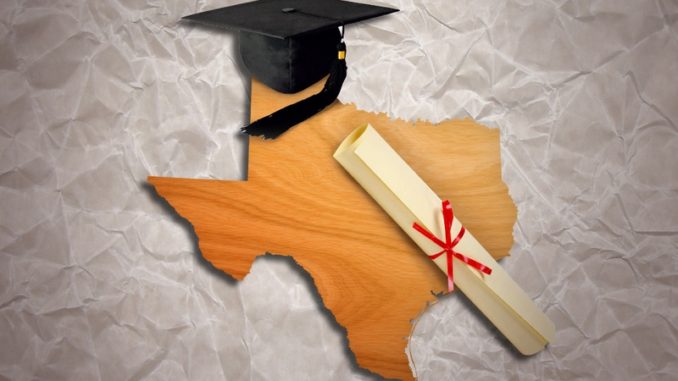Summer is coming to an end, and school is starting again. There is always hope at the start of a new school year for students and parents alike. Hope for a better year than last and hope for new successes.
The Texas Education Agency believes that the vast majority of our campuses, about 85 percent, are “meeting standards.” A little under 9 percent aren’t “meeting standards,” or as the TEA would put it, “require improvement.” So, are the standards really being met?
Schools are certainly not meeting the standards of employers. At least 60 percent of the jobs being created now require some kind of post-secondary degree or certificate. If a student is not career- or college-ready when they graduate high school, that means they are not ready to begin the post-secondary training needed to get one of those jobs
High school should be about graduating students who are ready to enter college or the workforce. Only 75 percent of ninth-graders graduate in four years, and only 25 percent of them are ready for a good job or college. As the economy evolves, this is catastrophic for our state and our children.
With the new accountability system, it is very easy for a student to be considered career- or college-ready — too easy, in my estimation. Students must only pass two of the five end-of-course exams required to graduate high school to be considered career- or college-ready. That sets up a system where a student can be considered career- or college-ready and not even be qualified to graduate high school. If less than a quarter of our young people graduate high school ready for a truly good job or college, how in the world can we tolerate the state saying 85 percent of our school campuses “meet standards?”
We also must remember the passing standards for these tests. To pass the algebra test, for example, students only have to get 37 percent correct. To be considered ready for college, that number should be at least 60 percent; however, if that were the passing standard only about 30 percent of students would be able to pass.
We also must remember that there is a growing number of students being raised in poverty attending our public schools. How will Texas move forward if we don’t make sure these children are getting a quality education? The answer is really simple. We won’t.
School districts get extra money from the state to educate children who are being raised in poverty, and justifiably so. What isn’t fair for these children is that the school districts, while getting extra money to educate them, are not being held accountable for actually doing that job.
If we are to move the academic performance of all Texas students to a level that will meet the needs of employers in the future, we simply must hold all public school campuses accountable. The current system does not achieve that goal. It reminds me of a soccer league for small children where scores are not recorded and everyone gets a trophy at the end of the season. We are not giving our schools anything to strive for. There is no difference in the “meeting standards” ranking that would let you know if your school is top-rated or barely scraping by.
An honest evaluation would discover that far more than around 9 percent of campuses “require improvement.” If Texas is going to continue to be an economic leader in the decades to come, our public education system must look at itself without a candy-coated shell. An honest accountability system doesn’t cost more, but it will drive academic performance and keep us competitive and economically strong. That is my hope as we start a new school year.




